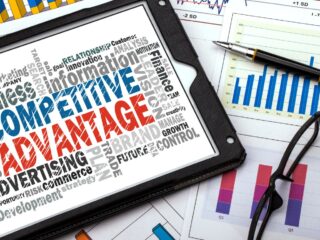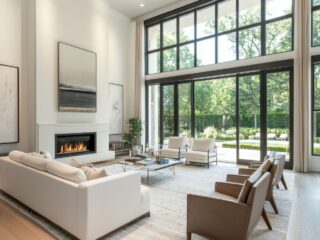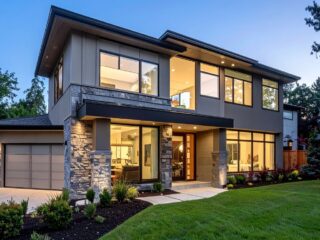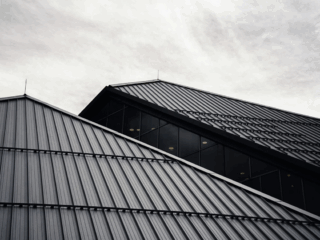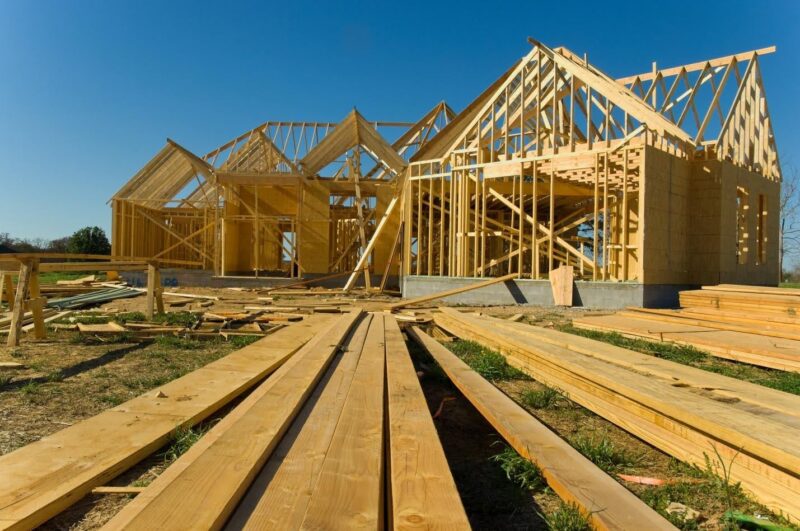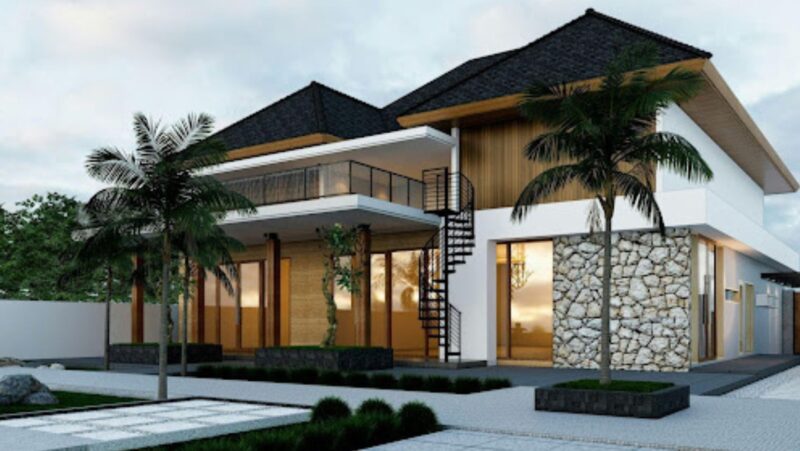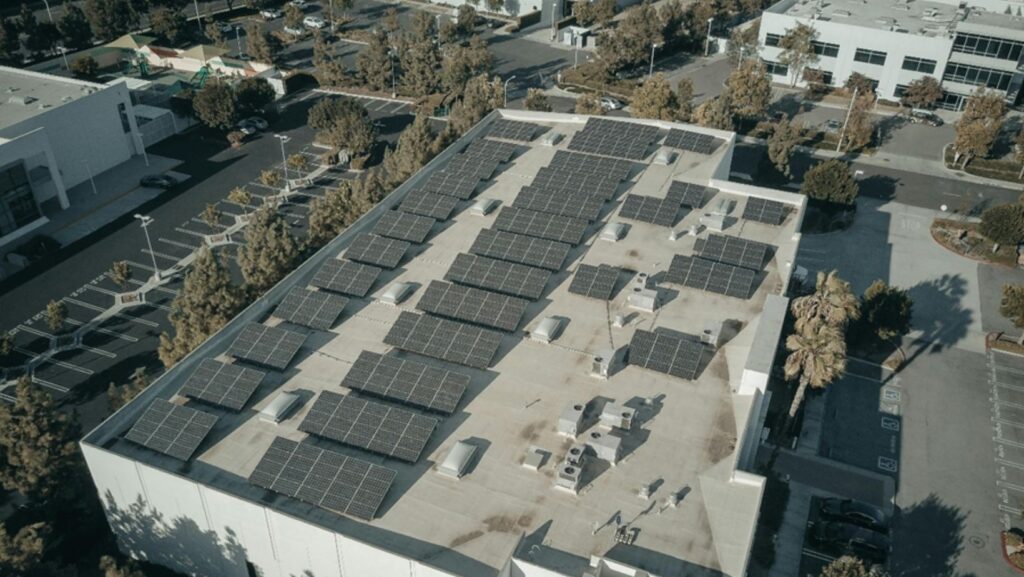
The built environment produces a big part of carbon emissions worldwide, emphasizing the urgent need for sustainable architectural practices. As the demand for net-zero facilities continues to rise, architects and design professionals play a pivotal role in shaping energy-efficient solutions.
One key aspect of sustainable design is eco-friendly power distribution, which reduces carbon footprints, enhances building performance and lowers operational costs. By integrating smart energy strategies, buildings can become more efficient and resilient.
The following approaches provide practical steps for incorporating sustainable power distribution into architectural designs, paving the way for a greener built environment.
1. Renewable Energy Systems for On-Site Generation
Integrating renewable energy from solar panels and wind turbines into building designs reduces reliance on fossil fuels and lowers overall emissions. Enscape 3D highlights that these systems are most effective with passive design strategies to optimize natural energy use.
The Bullitt Center in Seattle exemplifies this approach by generating more energy than it consumes annually through its solar array.
Actionable Guidance:
- Solar Integration: Install photovoltaic (PV) panels on rooftops, facades, and shading structures, incorporating battery storage for efficiency.
- Wind Turbine Assessment: Evaluate the feasibility of small-scale wind turbines in locations with consistent wind resources.
2. Implement DC Power Distribution for Enhanced Efficiency
DC power distribution is increasingly recognized as an energy-efficient alternative to traditional AC systems. Buildings.com reports that using all-DC power distribution can achieve 10% to 20% energy savings by eliminating conversion inefficiencies.
Actionable Guidance:
- DC Microgrids: Consider implementing DC microgrids in new constructions to reduce conversion losses.
- DC Appliances: Specify DC-compatible appliances and LED lighting to reduce energy waste further.
- Net Metering: Maintain grid interconnection to feed excess renewable energy back into the grid and leverage incentives.
3. Use Passive Solar Design to Minimize Energy Demand
Passive solar design reduces reliance on mechanical heating and cooling by effectively leveraging the building’s structure and materials to manage solar energy. This approach includes thermal mass materials and daylight harvesting techniques.
Actionable Guidance:
- Thermal Mass: Utilize concrete, brick, and stone to absorb and release solar heat, stabilizing indoor temperatures.
- Daylight Harvesting: Strategically place windows and skylights to maximize natural daylight.
- Building Orientation: Optimize building positioning to harness solar gain in winter and reduce it in summer.
4. Smart Power Distribution Units for Granular Control
Smart Power Distribution Units (PDUs) enhance energy monitoring and control, providing insights into a building’s power consumption. Lab Design News states that Smart PDUs facilitate energy-saving strategies like load balancing.
Actionable Guidance:
- Real-time Monitoring: Use Smart PDUs to track energy usage at the device level.
- Load Balancing: Optimize power distribution to reduce peak demand and energy costs.
- Remote Management: Implement remote monitoring for real-time energy optimization.
5. High-Efficiency Transformers for Sustainable Power Distribution
Consider partnering with a trusted transformer manufacturer for reliable and efficient power solutions that are key to sustainable building. Energy-efficient transformers play a key role in reducing electrical losses and improving sustainability. High-efficiency models minimize energy waste and comply with Department of Energy standards, supporting eco-friendly building initiatives.
Actionable Guidance:
- Specify High-Efficiency Transformers: Prioritize transformers that meet or exceed efficiency standards.
- Custom Solutions: Consider custom-designed transformers for unique project needs.
- Retrofit Inefficient Transformers: Replace outdated models to enhance energy performance.
6. Optimize Building Orientation and Site Planning
Strategic site planning can reduce energy consumption by maximizing sunlight exposure and natural ventilation. Proper landscaping can also enhance energy efficiency.
Actionable Guidance:
- Sunlight Analysis: Conduct assessments to optimize building orientation.
- Natural Ventilation: Design layouts that promote airflow and reduce the need for mechanical cooling.
- Landscaping: Utilize trees and vegetation for shading and wind protection.
7. Smart Lighting Technology for Demand-Based Illumination
Automated lighting systems reduce energy waste by adjusting to occupancy and daylight availability. Energy monitoring further optimizes efficiency.
Actionable Guidance:
- Occupancy Sensors: Install motion sensors to turn off lights when not in use.
- Daylight Dimming: Implement systems that automatically adjust artificial lighting.
- Centralized Control: Use lighting management systems for scheduling and monitoring.
8. Green Roofs and High-Performance Insulation for Building Efficiency
Upgrading a building’s envelope with green roofs and high-performance insulation is a game-changer for energy efficiency. They add an extra insulation layer, soak up sunlight instead of letting it heat the building, and even help with stormwater management.
Meanwhile, high-performance insulation keeps indoor temperatures steady by sealing in warmth during winter and blocking heat in the summer. It cuts down the need for heating and cooling, reducing energy bills.
Actionable Guidance:
- Green Roofs: Implement green roofs to improve insulation and manage rainwater.
- High R-Value Insulation: Use advanced insulation materials to reduce energy loss.
- Advanced Glazing: Opt for double or triple-pane windows with low-E coatings.
9. Monitor Progress and Continuously Refine Strategies
Sustainability is a continuous process that demands regular monitoring, assessment, and refinement. Buildings can identify inefficiencies by conducting energy audits, analyzing performance data, leveraging smart energy management systems, and implementing targeted improvements. Proactive adjustments ensure that energy-saving strategies remain effective and adapt to technological advancements and changing operational needs.
Actionable Guidance:
- Regular Energy Audits: Conduct audits to assess efficiency improvements.
- Energy Management Systems (EMS): Use EMS to analyze data and optimize energy use.
- Data-Driven Adjustments: Adjust operations and technologies based on performance data.
10. Financial Incentives for Sustainable Projects
Incentives like grants, tax credits, and rebates can significantly reduce the upfront costs of sustainable building investments. They encourage the adoption of energy-efficient technologies by lowering initial expenses and improving long-term return on investment.
Actionable Guidance:
- Research Incentives: Explore local, state, and federal programs for energy efficiency.
- Green Building Certifications: Obtain LEED or ENERGY STAR certifications to qualify for incentives.
- Utility Rebate Programs: Take advantage of rebates for installing high-efficiency equipment.
Moving Toward a More Sustainable Future
Eco-friendly power distribution in architecture requires a holistic approach. Architects and designers can create more sustainable, resilient buildings by implementing these strategies—from renewable energy integration and smart power distribution to passive solar design and high-efficiency transformers. Thoughtful planning and adoption of advanced technologies will help drive the switch to a greener built environment.




